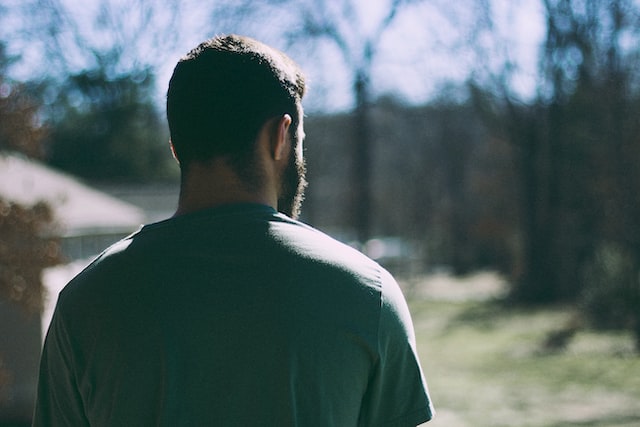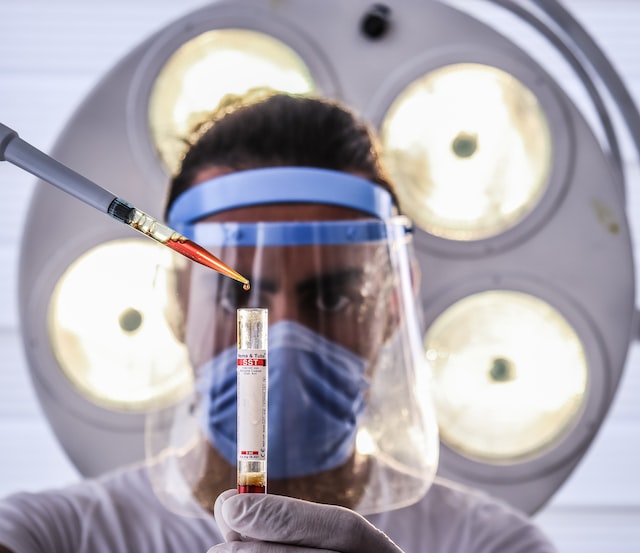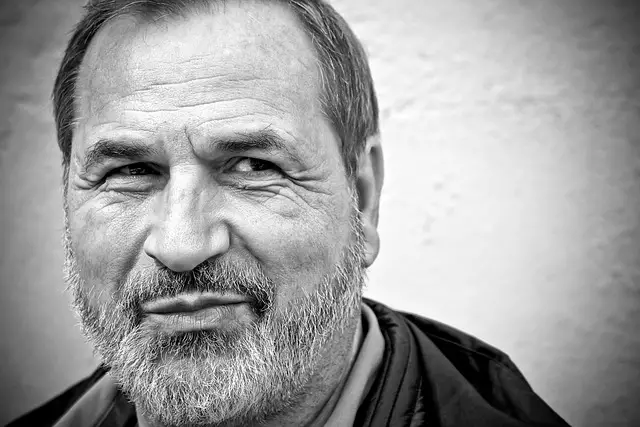Eyebrow transplant is a popular cosmetic procedure for those who desire fuller and well-shaped eyebrows.
In this article, we’ll explore the process of eyebrow transplant, how it works, and compare it to other brow enhancement options such as microblading.
Let’s dive into the world of eyebrow transplants and discover if it’s the right solution for you.
What is eyebrow transplant?
Eyebrow transplant is a surgical procedure that involves transplanting hair from a donor site, typically the back of the head, to the eyebrow area.
The goal of this procedure is to create fuller, more defined eyebrows that look natural and complement your facial features.
How eyebrow transplant works
Here’s a step-by-step guide on how the eyebrow transplant procedure works:
- The surgeon will first draw an appropriate eyebrow shape that matches your facial features and discuss the desired thickness and density with you.
- The donor area, usually the back of the head, is selected. In some cases, body hair may also be used for eyebrow transplants.
- A strip of tissue containing hair follicles is removed from the donor site, and healthy hair grafts are separated under a microscope.
- The hair grafts are then carefully placed into the eyebrow area at specific angles and densities to achieve a natural look. The hairs are placed flat and parallel to the skin, mimicking the natural placement of eyebrow hairs.
- Once all grafts are placed, the surgery is complete. Anesthetic agents are used to ensure a pain-free experience throughout the procedure.
Post-eyebrow transplant care and recovery
After the surgery, you may experience some swelling or pain, which can be managed with acetaminophen.
The swelling should subside within a few days. Avoid touching the transplanted area to prevent dislodging the hair grafts before they set.
You can gently wash the transplanted area after 5-6 days. The transplanted hairs will fall out within 3-4 months and then regrow.
Full results can be expected within 10-12 months.
Is eyebrow transplant worth it?
Eyebrow transplant can be a worthwhile investment for those who want a permanent solution for fuller, well-defined eyebrows.
The procedure delivers natural-looking results, as it uses your own hair. However, it’s essential to consult with a qualified surgeon to determine if this procedure is the best option for you.
Is eyebrow transplant permanent?
Yes, eyebrow transplants are considered permanent, as the transplanted hairs will continue to grow in the eyebrow area.
However, keep in mind that individual results may vary, and touch-up procedures may be necessary over time.
How long does eyebrow transplant last?
Eyebrow transplants are designed to be long-lasting, with results that can last for many years.
However, individual factors such as hair growth rate, age, and lifestyle can impact the longevity of the transplant.
Eyebrow transplant vs microblading
While both eyebrow transplant and microblading aim to create fuller, more defined eyebrows, there are significant differences between the two procedures:
- Eyebrow transplant is a surgical procedure that uses your own hair for a natural appearance, while microblading is a semi-permanent tattoo technique that uses pigment to create hair-like strokes.
- Eyebrow transplant is a permanent solution, whereas microblading typically lasts 1-3 years and requires touch-ups.
- The cost of eyebrow transplants is generally higher than microblading, but the results are more durable.
Can You Get Eyebrow Transplant After Microblading?
The short answer is yes! You can get an eyebrow transplant after microblading.
Although microblading is a form of tattooing that creates scars in the eyebrow area, it doesn’t prevent you from having an eyebrow transplant.
However, it’s important to note that the presence of scar tissue may affect hair growth after the transplant, and you may need to take some extra precautions to ensure successful results.
What is Microblading and How It Is Done
Microblading is a semi-permanent makeup technique that involves using a hand-held tool with tiny needles to deposit pigment into the skin, creating the appearance of natural hair strokes.
This method is particularly popular among those with thin or sparse eyebrows, as it can help create a fuller, more defined look.
The results of microblading typically last between 1 to 3 years, after which you may need a touch-up to maintain the desired appearance.
How Long Does It Take for Eyebrows to Grow Back After Microblading?
After a microblading session, it’s essential to wait for a sufficient amount of time before considering an eyebrow transplant.
It’s generally recommended to wait at least 5 to 6 months after microblading before going for an eyebrow transplant.
This waiting period allows the skin to heal and reduces the risk of complications during the transplant process.
Can You Get Microblading Done If You Have No Eyebrows?
Yes, microblading can be done even if you have no eyebrows.
In fact, many people who suffer from conditions that cause hair loss, such as alopecia or chemotherapy, turn to microblading as a way to restore the appearance of natural eyebrows.
However, it’s crucial to consult with a professional microblading artist to discuss your specific needs and determine if this technique is suitable for you.
Can I Fill In My Eyebrows After Microblading?
After the microblading procedure, your eyebrows may appear darker and more intense for the first few days.
As the pigment begins to settle, your eyebrows will gradually lighten and soften.
Once the healing process is complete, you can certainly fill in your eyebrows with makeup if desired, but many people find that the results of microblading are sufficient without the need for additional makeup.
How Many Grafts Are Needed for an Eyebrow Transplant?
The number of grafts needed for an eyebrow transplant varies depending on several factors, such as the desired thickness and shape of the eyebrows. In general, you can expect the following:
- For eyebrow filling or touch-ups: Approximately 150-200 grafts per eyebrow
- For a total eyebrow transplant: Between 500 and 1,000 grafts in total
It’s important to note that the exact number of grafts required will be determined during a consultation with your surgeon, who will evaluate your individual needs and expectations.
How Many Maximum Grafts Can Be Transplanted?
In a single session, typically around 500 grafts can be transplanted, which takes about 2-4 hours.
However, if more than 1,000 grafts are needed for the desired results, multiple sessions may be required.
The survival rate of hair grafts after an eyebrow transplant is around 95%, but some hair may not survive, requiring additional grafts in subsequent sessions.
Eyebrow Transplant Cost
The cost of an eyebrow transplant varies depending on several factors, such as the surgeon’s experience, the geographic location of the clinic, and the number of grafts required.
On average, you can expect to pay between $3,000 and $6,000 for an eyebrow transplant. It’s essential to consult with a reputable surgeon to get an accurate cost estimate based on your specific needs.
Do Eyebrow Transplants Look Natural?
The short answer is yes, eyebrow transplants can look natural. The procedure uses hair from the back of the head, which is similar in thickness and texture to eyebrow hair.
Additionally, the transplant process is designed to create a natural appearance by placing the hairs in a specific pattern and angle that mimics the growth of natural eyebrow hair.
How eyebrow transplant is done
During an eyebrow transplant, the surgeon first draws the appropriate size and shape of the eyebrow that suits the client’s face.
Hair grafts are then harvested from the donor area, typically the back of the head.
These grafts are carefully placed in the eyebrow area, lying flat against the skin to replicate the natural growth pattern of eyebrow hair.
It’s essential to choose a skilled and experienced dermatologist or surgeon to perform the procedure, as their expertise plays a crucial role in achieving natural-looking results.
Are eyebrow transplants worth it?
Eyebrow transplants can be worth it for those who want a permanent solution to sparse or uneven brows.
However, keep in mind that the transplanted hairs will continue to grow and require regular trimming to maintain the desired length and shape.
It’s important to weigh the benefits and potential drawbacks before deciding if an eyebrow transplant is the right choice for you.
Alternatives to eyebrow transplant
If you’re unsure about undergoing an eyebrow transplant, there are alternative methods to enhance your eyebrows:
- Microblading: A semi-permanent tattooing technique that uses pigment to create hair-like strokes, lasting between 1-3 years.
- Eyebrow tinting: A temporary dye is applied to the brows to enhance their color and shape, lasting 4-6 weeks.
- Brow pencils and powders: Makeup products that can be used to fill in sparse areas and create the illusion of fuller brows.
- Eyebrow growth serums: Products containing ingredients that promote hair growth and can help improve the appearance of sparse brows over time.
Do Eyebrow Transplants Keep Growing?
Yes, it is true that eyebrow transplants keep growing.
When scalp hair is used as donor hair for the transplant, it retains its natural growth cycle, which is longer and thicker than natural eyebrow hair.
This is due to the difference in the growth cycle between scalp hair and eyebrow hair.
Understanding Hair Growth Cycles
To comprehend why transplanted hairs continue to grow, it’s essential to understand the three stages of the hair growth cycle:
- Anagen (Growth) Phase: During this phase, new hairs are formed as cells in the hair root divide quickly.
- Catagen (Transitional) Phase: This short phase follows the Anagen phase, signaling the end of active hair growth. Blood supply to the hair is cut off, and cell division slows down.
- Telogen (Resting) Phase: Hairs do not grow during this phase and are at rest. After several days, the hair enters the Exogen phase, where it sheds from the body.
Eyebrow Hair vs. Scalp Hair Growth Cycles
The growth cycle of eyebrow hair typically takes about four months to complete, while scalp hair has a growth cycle of three to four years. The table below shows the duration of each phase for both eyebrow and scalp hair:
| Phases |
Eyebrow Hair |
Scalp Hair |
| Anagen |
2-3 Months |
3-10 Years |
| Catagen |
2-3 Weeks |
2-3 Weeks |
| Telogen |
> 100 Days |
3-4 Months |
As the Anagen phase of scalp hair is longer than that of eyebrow hair, the scalp hair will continue to grow when transplanted to the eyebrow area.
Maintaining Eyebrow Shape After Transplant
To maintain the shape of your eyebrows after a transplant, it’s important to follow certain tips and tricks:
Avoid touching the eyebrows for the first few days after the transplant to prevent dislodging the grafts or causing infection.
Follow the specific aftercare instructions provided by your doctor to ensure proper healing and growth of the transplanted hair follicles. This may include avoiding certain activities, keeping the eyebrow area clean, and avoiding sun exposure.
Use a soft brush to gently brush your eyebrows in the direction of hair growth to keep them neat and tidy, but avoid using a hard brush or comb that can dislodge the hair grafts.
Avoid plucking or waxing the transplanted hair for the first few months after the transplant, as the hair grafts are delicate and can easily be dislodged. Once the transplanted hair has fully grown, you can pluck or wax as desired.
Trim your eyebrows regularly with a small scissor or trimmer to maintain their shape and prevent them from looking unruly. Be careful not to trim too much or too close to the skin, as it can damage the hair follicles.
Moisturize the eyebrow area with a gentle moisturizer or oil to keep the skin hydrated and prevent dryness, but avoid applying too much that can clog the hair follicles and affect their growth.
What are Eyebrow transplant risks and complications?
Eyebrow transplant risks and complications include:
- Bleeding
- Swelling
- Pain
- Infection
- Scarring
- Nerve damage
- Graft failure
- Loss of existing eyebrow hair
These are some of the common possible complications that may arise during or immediately after eyebrow transplant surgery.
Bleeding: During harvesting and transplanting, a micro-incision is made to take out the hair follicle and put it back in the recipient area. From these incision sites, bleeding occurs easily controlled with compression or cautery. However, those patients who smoke or drink alcohol have more chance of severe bleeding. That’s why surgeons want you to quit smoking and drinking before surgery.
Recommended reading:
# Effects of smoking on hair transplant
# Effects of drinking on hair transplant
Swelling: You’ll observe swelling over the eyebrow or donor site immediately after eye transplant surgery. This is due to trauma during surgery which subsides on its own within a couple of days.
Pain: Anaesthetic agent, lidocaine with adrenaline, is used during surgery to make it painless. However, it only works for a few hours. After that, you’ll start to experience pain for which paracetamol can be taken without any risk of bleeding.
Infection: Eyebrow transplant is done under strict aseptic conditions. So, there is a minimum chance of infection of the wound. But, it might happen which manifested as fever and pain in the wound area. Diabetic persons have more chance of infection than non-diabetic. That’s why your blood sugar level is within normal limits during and after surgery.
Recommended reading: Can diabetic person have hair transplant?
Scarring: Eyebrow transplant is mainly done using Follicular Unit Transplant (FUT) technique. In this technique, a strip of scalp with hair follicles on it is taken out from the back side of the neck and then hair follicles are separated under a microscope. This leaves a linear scar over the back of the head which is not visible directly as it is covered with long hair.
Nerve damage: There is also a chance of nerve damage in the eyebrow area during transplant surgery which manifests as numbness in that area.
Graft failure: Not all hair graft that is transplanted will survive. If there are fewer grafts uptake, you may have to go through the second session of eyebrow transplant to get desired density and shape of the eyebrow.
Loss of existing eyebrow hair: During eyebrow transplant, an incision is given to the eyebrow area with the blade. Though these incisions are very small in size, there will be damage to nearby tissue and hair follicle which is responsible for the fall of existing hair.
What are the other risks of eyebrow transplant?
You may not like your eyebrows after the transplant. It may not look natural and like what you expected.
It is due to two reasons: Either, you’ve very high expectations or surgeons who performed eyebrow transplant surgery are not experienced.
For natural-looking eyebrows, donor hair should match the natural eyebrow hair in thickness, color, and texture, and it should be kept in such a way that it matches the facial contour perfectly.
Ideally, eyebrow hairs are flat touching the skin. If it is raised, it doesn’t look natural and you should keep trimming them to maintain the shape.
What you should expect after an eyebrow transplant?
If you’ve eyebrow transplant using the FUT technique, non-absorbable sutures are used to close the wound in the donor area. And, it is covered with a bandage for a couple of days. Then, after a week you need to visit the clinics for suture removal.
Also, you’ll get antibiotic ointment to apply over the suture area.
In the recipient area, i.e. your eyebrow, you’re not allowed to touch it after surgery. Don’t put water over it at least for six days.
The crust will be developed over the wound area on the eyebrow which can be removed after six days by gently rubbing the area.
You should also know that all transplanted hair will fall out after three weeks and it regrows after 2-4 months. You’ll only see the full result of the eyebrow transplant after a 10-12 month period.







